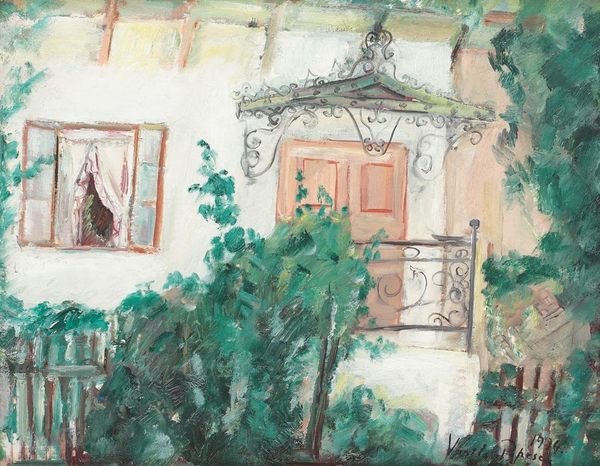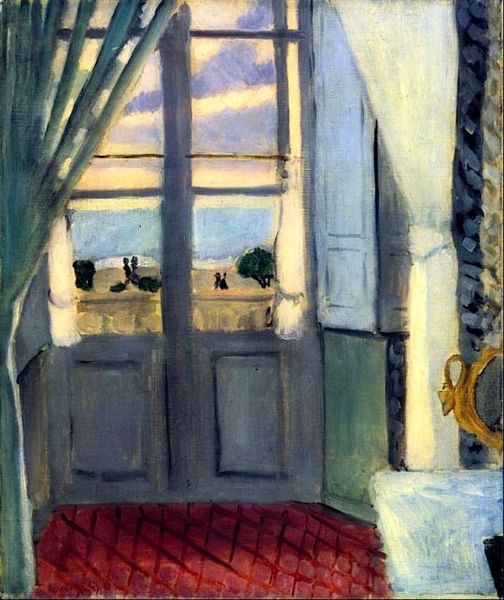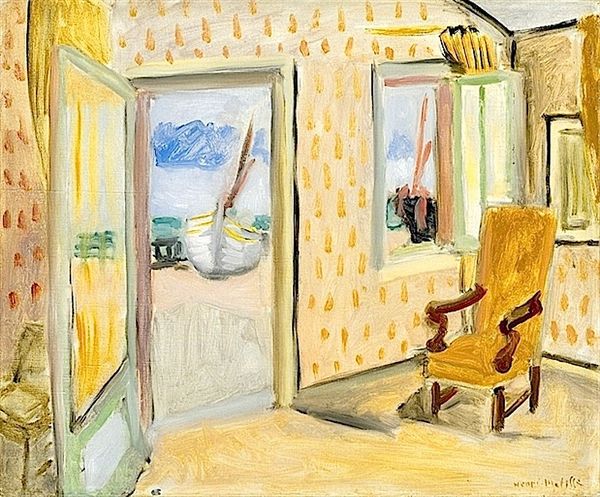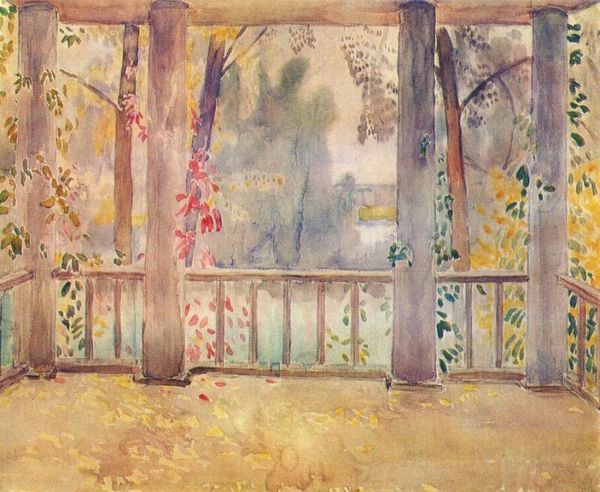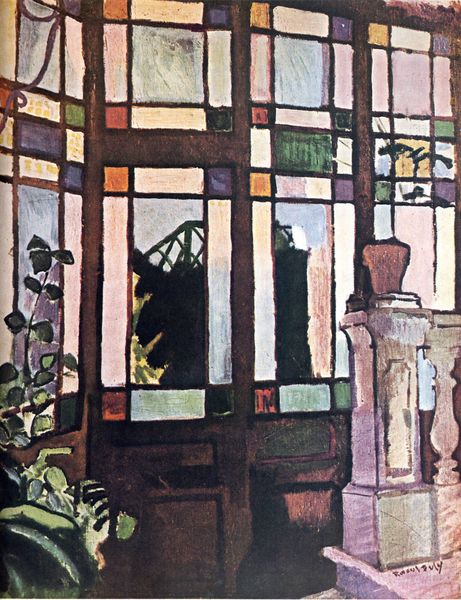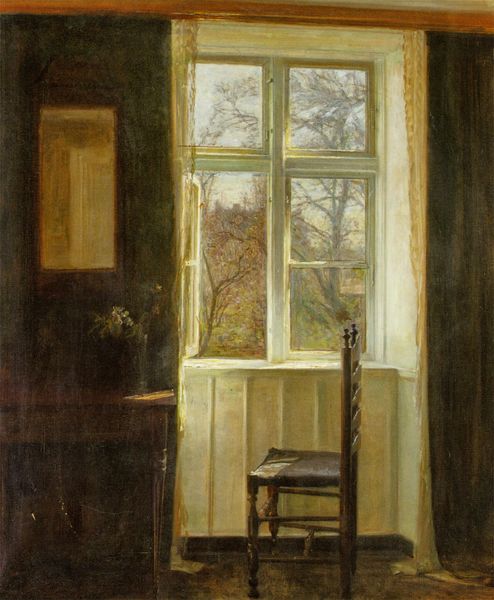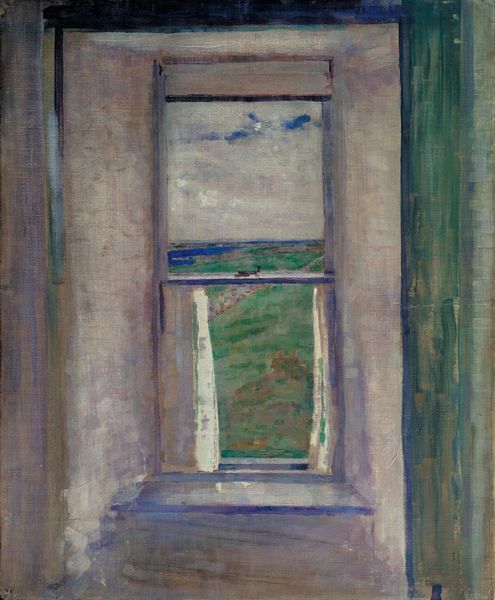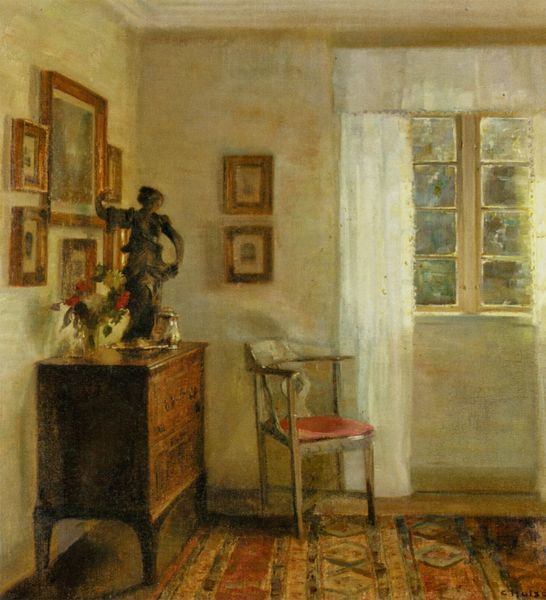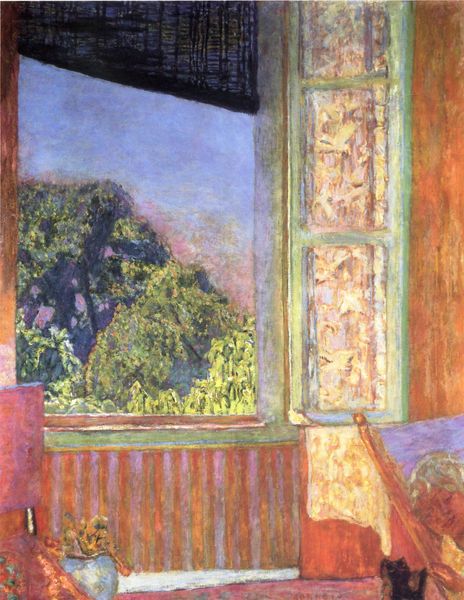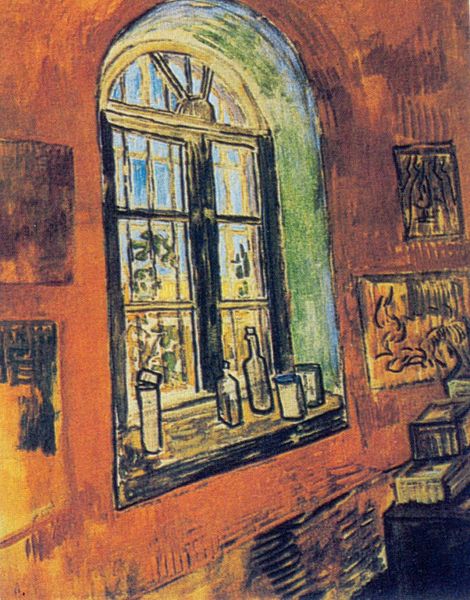
Copyright: Public domain US
Editor: So, this is "Veranda Spring" painted around 1900 by Zinaida Serebriakova, seemingly using watercolor. I’m immediately drawn to the bright colors of the outside world viewed through the window, which seem to contrast a lot with the shadowy interior. What stands out to you about it? Curator: What strikes me is the apparent ease of production here. Watercolors weren’t typically considered high art. They were materials used more in studies, for reproduction and portability, but here Serebriakova presents us with a finished, displayed work using the medium. Editor: So, you're saying the very choice of materials pushes against what was considered acceptable at the time? Curator: Precisely. Consider the social context: Watercolor production was much less labor-intensive and also cheaper compared to oils. And who is given access to this creative pursuit? What type of labour is valued and seen as prestigious? Also note how she treats the subject matter; it is just a corner of a room, nothing spectacular. How might it question those traditional artistic values? Editor: It's like she's intentionally blurring the lines between a sketch and a formal painting. What's your impression on the painting’s message overall? Curator: Well, I believe that by focusing on readily available materials and an ordinary domestic scene, she is also drawing attention to accessibility. Who can consume art like this and is it questioning the nature of labor inherent in other, more ‘noble’ arts? Editor: That’s fascinating, thinking about the work itself as a quiet statement on artistic labor and class. It makes me look at it in a whole new way. Curator: Exactly, and understanding those aspects opens a new view on something that looked simply "impressionist" initially!
Comments
No comments
Be the first to comment and join the conversation on the ultimate creative platform.

